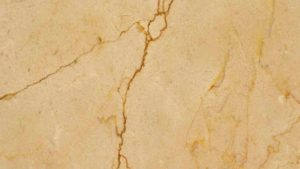Difference between tiles and marbles or a comparison of tiles vs marble is the most hotly contested flooring material choice that tries to enter the picture while finalising the interiors. The majority of interior materials can be easily, quickly, and cheaply replaced. However, replacing flooring is an expensive and time-consuming task. Therefore, pick a flooring material that can complement the interior design themes and is durable and low maintenance.
Tile vs marble both have benefits and drawbacks. Both make excellent, long-lasting flooring materials and come in a wide range of shades, colours, and textures. A thorough comparison of the difference between tiles and marble is presented in this article. This will assist you in making the right decision and choosing a flooring option that meets your requirements and budget.
Difference between Tiles and Marbles – Comparison
As flooring material, marble and tiles have excellent and unique qualities. Both of these products, however, are only appropriate for use in specific circumstances. We should be aware of the differences between marble and tiles in order to select the best material. This article describes how the differences between tiles and marbles are classified based on various parameters.
Related articles from Vincivilworld
Tile vs Marble – Composition
Let us have a look at the composition of marble and tile
Marble
Marble is a natural stone that is formed through the metamorphic crystallisation of limestones. The limestone is transformed into calcite crystals with a variety of colours, swirls, and veins as a result of this metamorphic process involving high pressure and heat.

Tiles
Tiles are manufactured/artificial flooring products made from natural clay or clay mixed with quartz, silica, and other materials and fired at high temperatures.
Difference between tiles and marbles – Availability, classification & looks
| Marble | Tiles |
| Marble is a natural material that comes in a wide range of colours and shades as well as veins and swirls. | Tiles are man-made materials with digitally printed designs, colours, textures, and so on. |
| Marble has a uniquely natural feel. Each piece is unique from the others. The same stone may vary significantly between different lots. | The appearance and colour of tiles are factory-controlled. Tiles differ only fractionally between batches. |
| Shades and textures vary from batch to batch. Buying the same marble after a few years is difficult due to the non-availability of matching stones. | Tiles are readily available in all most all places. |
Difference between tiles and marbles – Porosity
Marble has a high level of porosity and is semitransparent. They stain after absorbing the liquids that fall on them. The marble is mirror polished to reduce the porosity and absorption rate, Because of the high porosity, marble is not recommended for wet areas such as the kitchen or toilets.
Tiles have relatively low porosity and low water absorption. They are perfect for high-moisture areas like bathrooms and kitchens.

Difference between tiles and marbles – Environmental Friendliness
Although marble is a natural material, it is not an environmentally friendly option. They are nonrenewable resources, and the extraction process is both energy intensive and hazardous to the environment.
Tiles, on the other hand, are better than marble, and the manufacturing process is also environmentally friendly.
Tile vs Marble – Cost
Marble is more expensive than tiles. Some varieties of marble-like Italian marble are expensive. Tile, on the other hand, is a cost-effective and affordable product with prices ranging from Rs.40/- per sqft to Rs.70/- sqft and higher. Marble is an expensive flooring material, whereas tiles are a more affordable option.
Tile vs marble – Wastages
Marble is susceptible to cracking during transport and installation. Furthermore, marble is available in slabs that must be cut into rectangular pieces before use. This generates a significant amount of waste, which raises the price of marble used in construction. Marble typically generates a wastage of between 15% and 20%, whereas tiles typically have wastage of only 3-5%.
Difference between tiles and marbles – Ease of handling and workmanship
Marble is much heavier than tiles and comes in 16-20 mm thickness, whereas tiles are available in 8-10 mm thickness. The use of marble raises the structure’s dead load, which in turn raises the design requirements. Additionally, while carrying and lifting marble is difficult, doing so with tiles is simple. Marble cutting and laying require a highly skilled worker, whereas installing tiles is simple and quick.
Tiles do not necessitate the use of a highly skilled worker. Marble requires grinding and polishing, which takes time, whereas tile can be installed quickly. Only joint grouting is required prior to handover.

Conclusion
Both marble and tile are excellent building materials. But the beauty and classic feel of marble can never be matched. Marble is a costly and luxurious finish material that is slowly moving out of the affordable material category. Tiles in turn are less expensive, easily available, got a vast variety of shades and textures, and can be done very fast. Tiles are available for any traffic and abrasion levels and can match any architectural concept and theme.


One comment
Comments are closed.